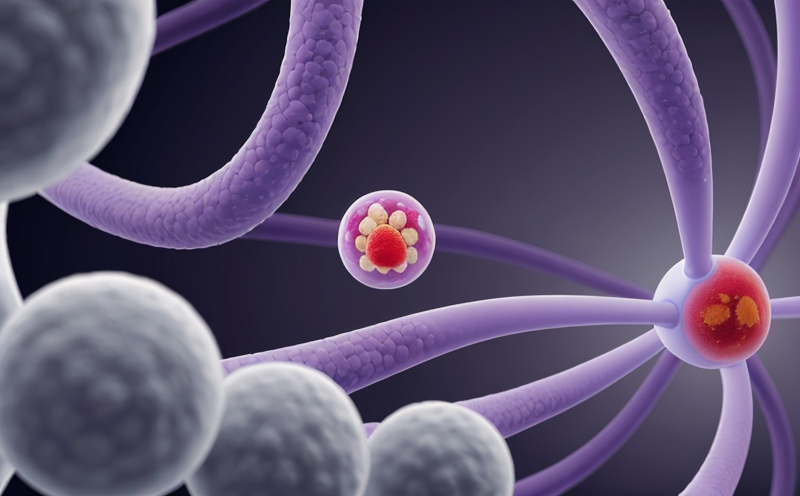Oncogene Amplification Testing in Rodent Cancer Models
Understanding and characterizing oncogene amplifications is crucial for the development of targeted therapies. In rodent cancer models, these tests provide insights into the molecular mechanisms driving tumor formation and progression. This service involves comprehensive analysis using advanced technologies to identify and quantify oncogene amplifications within various types of tissue samples from rodents.
The primary goal is to evaluate gene copy number variations (CNVs) that are indicative of potential therapeutic targets or predictive markers for response to specific treatments. By leveraging this data, researchers can refine their understanding of cancer biology and accelerate the discovery of more effective therapies for human patients.
Our laboratory employs state-of-the-art techniques such as fluorescence in situ hybridization (FISH), quantitative PCR (qPCR), and next-generation sequencing (NGS) to ensure accurate and reproducible results. These methods allow us to detect even subtle changes in gene copy numbers, which are often critical for understanding the complexity of oncogenic processes.
For instance, studies have shown that certain amplifications can lead to increased expression levels of key proteins involved in cell proliferation and survival pathways. Identifying these specific alterations helps clinicians tailor treatment strategies based on individual patient profiles. Additionally, our team works closely with clients throughout every step of the process—from sample acquisition through final report generation—to ensure they receive actionable insights.
The importance of accurate detection cannot be overstated; even small discrepancies in gene copy number can significantly influence treatment outcomes. Therefore, our rigorous quality control measures and adherence to international standards (ISO 17025) guarantee reliable results that meet regulatory requirements.
Our experienced scientists will guide you through the entire workflow, starting from initial consultation on appropriate sample types up until delivery of comprehensive reports summarizing all findings. We offer tailored solutions designed specifically for your research goals and budget constraints, ensuring efficient use of resources while maintaining scientific integrity.
Benefits
Implementing oncogene amplification testing in rodent cancer models offers numerous advantages across different aspects of drug development:
- Predictive biomarker identification: Helps identify potential targets for new drugs or repurposing existing ones.
- Targeted therapy optimization: Enables more precise selection of therapeutic approaches based on genetic profiles.
- Preclinical efficacy evaluation: Provides valuable information about how well a compound works against specific types of cancer before human trials begin.
- Regulatory compliance support: Ensures that all tests comply with relevant guidelines and regulations, facilitating smoother approval processes.
In summary, this service supports both translational research efforts aimed at improving patient care as well as regulatory submissions required for bringing innovative treatments to market faster.
Competitive Advantage and Market Impact
The ability to accurately detect oncogene amplifications provides significant competitive advantages within the pharmaceutical industry:
- Prioritization of promising compounds: By pinpointing key drivers of disease, companies can focus their efforts on areas most likely to yield successful outcomes.
- Improved R&D efficiency: Faster identification of relevant targets reduces development timelines and associated costs.
- Differentiation through innovation: Offering advanced testing capabilities positions organizations as leaders in cutting-edge research practices.
Furthermore, these tests contribute positively towards addressing unmet medical needs by accelerating the availability of personalized medicine options tailored to individual patient characteristics. As such, they play a vital role not only within corporate strategy but also in advancing public health initiatives globally.
Use Cases and Application Examples
| Use Case | Description |
|---|---|
| Preclinical Evaluation | Assessing the effectiveness of novel therapeutic agents in rodent models. |
| Biomarker Discovery | Identifying genes associated with specific cancers or responses to treatment. |
| Tumor Heterogeneity Analysis | Determining variations within individual tumors that may affect response patterns. |
| Treatment Response Monitoring | Evaluating changes in gene expression over time following initiation of therapy. |
- Example 1: A biotech company sought to determine whether a newly developed kinase inhibitor could effectively target EGFR mutations commonly found in lung cancers. Our team conducted FISH analysis on tumor samples from engineered mice harboring these mutations, confirming both the presence of the mutation and its sensitivity to the drug.
- Example 2: Another client wished to explore potential therapeutic strategies for triple-negative breast cancer (TNBC). Using qPCR and NGS technologies, we analyzed multiple lines of TNBC cells across diverse genetic backgrounds. This helped inform candidate selection for subsequent clinical trials focused on improving survival rates among this difficult-to-treat patient population.
These case studies illustrate just a few ways in which our oncogene amplification testing service can add value to your research projects.





